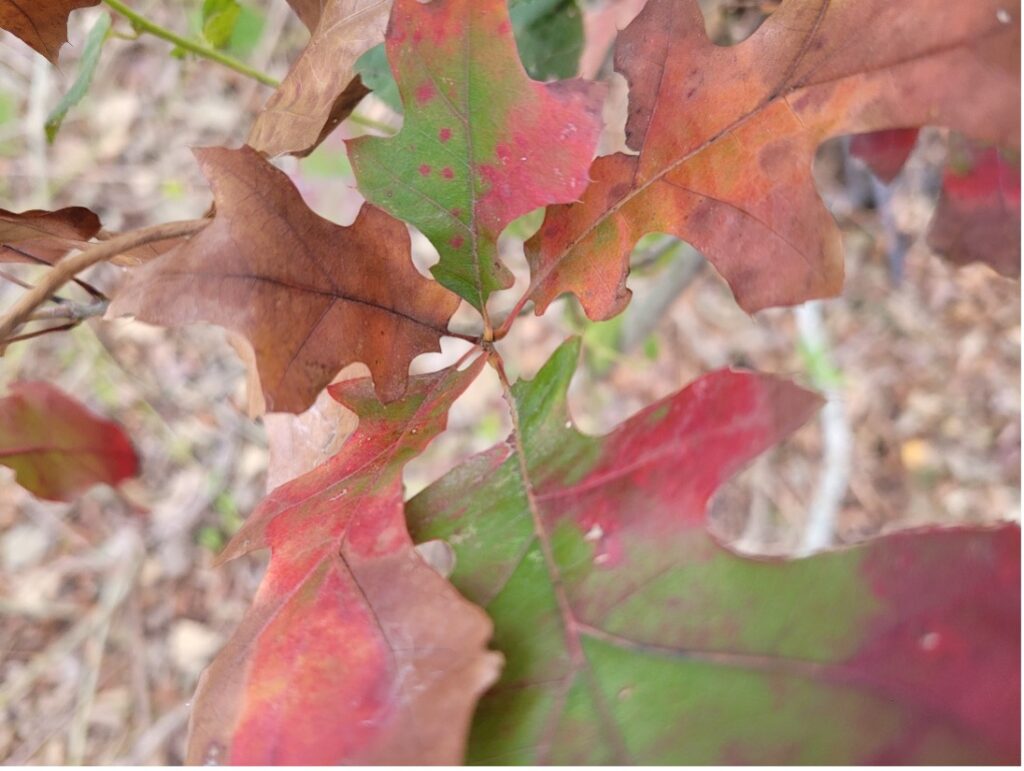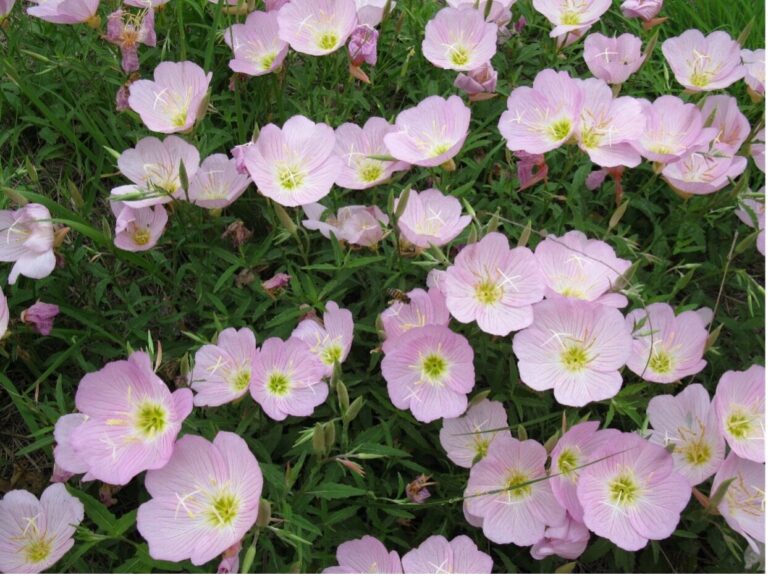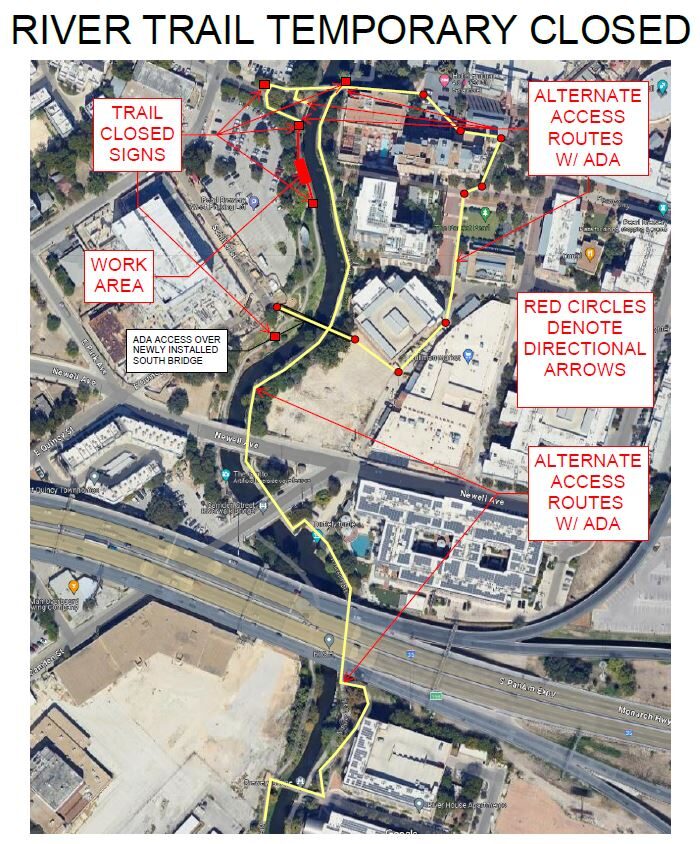Última actualización el 30 de enero de 2024
Algunas de las partes más encantadoras del otoño son las salpicaduras de rojo, amarillo y marrón. Aunque no es un destino tradicional para admirar las hojas, Texas tiene una variedad de colores sorprendente que sorprenderá incluso a un visitante de Vermont. Dé un paseo por su vecindario o por el río San Antonio y notará que algunos de los árboles y plantas caducifolios ya han comenzado a perder sus hojas, que a menudo forman una fina (o no tan fina) capa sobre el suelo.
Tradicionalmente, asociamos esta época del año con un aumento del trabajo en el jardín y el rugido constante de los sopladores de hojas. Muchos de nosotros podemos recordar la alegría infantil de saltar sobre una gran pila de hojas. Pero si buscas menos trabajo en el jardín, y Si desea ayudar al medio ambiente, existe una excelente solución para usted: deje las hojas este invierno y deje que su jardín luzca natural. ¡Qué "rehojas"!
Hermosos colores de otoño a lo largo del río San Antonio.
¿Sabías que esta manta es un refugio invernal crucial para insectos como mariposas y abejas?
Dejar las hojas y la vegetación muerta en el jardín tiene muchos beneficios. Las hojas caídas son parte del ciclo anual de la naturaleza y desempeñan un papel sorprendentemente crítico en el ecosistema, incluidos los de la cuenca del río San Antonio. Las temperaturas más frías pueden ser duras para los insectos y sus fuentes de alimento. La polilla mística Luna (Actias luna), espectaculares luciérnagas, elegantes mariposas cola de golondrina y nuestras abejas solitarias nativas increíblemente importantes (¡y más!) dependen de la hojarasca para protegerse durante el invierno. En su hábitat natural, incluso el murciélago rojo oriental (Lasiurus borealis) ¡Se sabe que se acurruca en una manta de hojas!
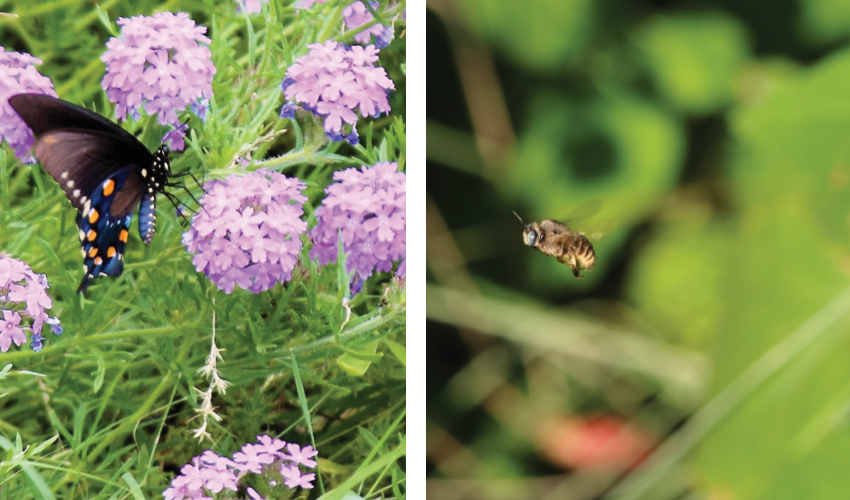
Izquierda: Mariposa cola de golondrina (Battus philenor) Derecha: Abejorro carpintero de Parkinson (Xylocopa tabaniformis ssp. Parkinsoniae) en pleno vuelo Crédito de la fotografía: Lee Marlowe
¿Recuerdas las abejas solitarias que acabamos de mencionar? Las abejas pueden tener mala reputación, pero estos pequeños animales no pueden picar o, por lo general, no lo hacen. No solo aprecian un jardín natural y autóctono, sino que también pueden aprovechar la vegetación muerta, como los tallos viejos de las flores de primavera. Las abejas solitarias hacen nidos pequeños y discretos en pequeñas grietas, a menudo utilizando ramas o tallos muertos. ¡Así que no deseches esos tallos de flores viejos todavía!
Durante el invierno, los insectos simplemente buscan lugares donde permanecer protegidos y resguardados del frío. Algunos de estos insectos estarán escondidos, como las especies de mariposas cola de golondrina que hibernan en la etapa de pupa. Dato curioso: ¡Sus crisálidas (pupas de mariposa) imitan con precisión una hoja muerta! Una pequeña capa de hojas en el suelo o alrededor de las plantas ofrece un pequeño escondite seguro donde probablemente ni siquiera las notarás.
¿Puedes ver la crisálida imitando una hoja?
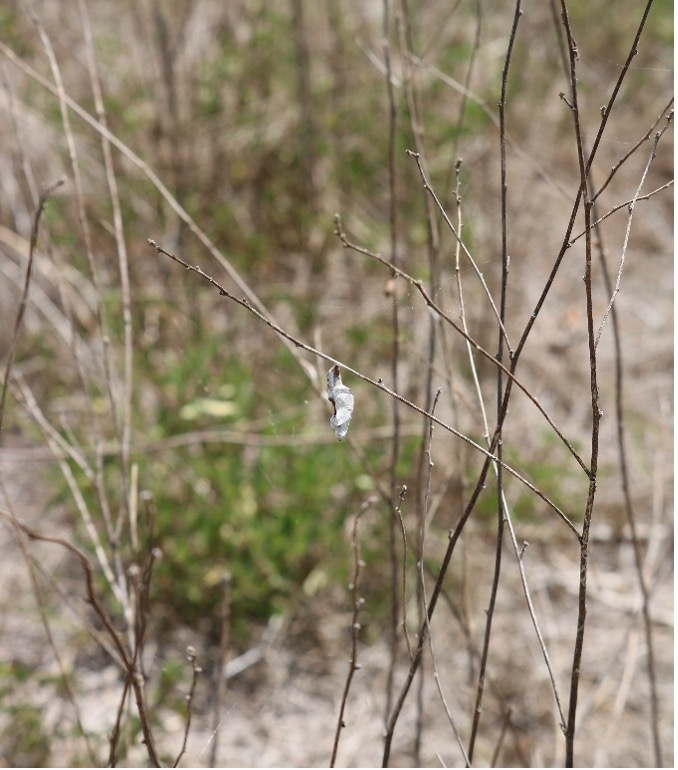
¡¡¡Ahí está!!!
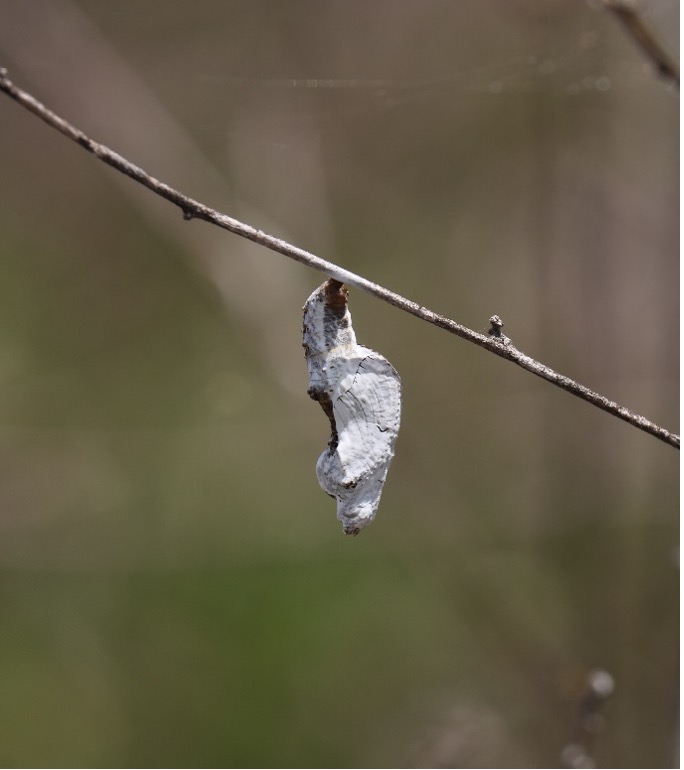
Se pueden encontrar otros insectos en cada una de las etapas de metamorfosis de la vida (huevo, larva, pupa o adulto), y algunos de ellos pasan por un proceso similar a la hibernación llamado diapausa. Durante los estados de diapausa, tener un refugio seguro y tranquilo es fundamental para la supervivencia de muchos insectos diferentes. A su vez, los insectos son una parte importante de casi todas las redes alimentarias, ya que alimentan a masas de aves, lagartijas, pequeños mamíferos y más. ¡Incluso un diminuto colibrí alimenta a sus polluelos con pequeños insectos!
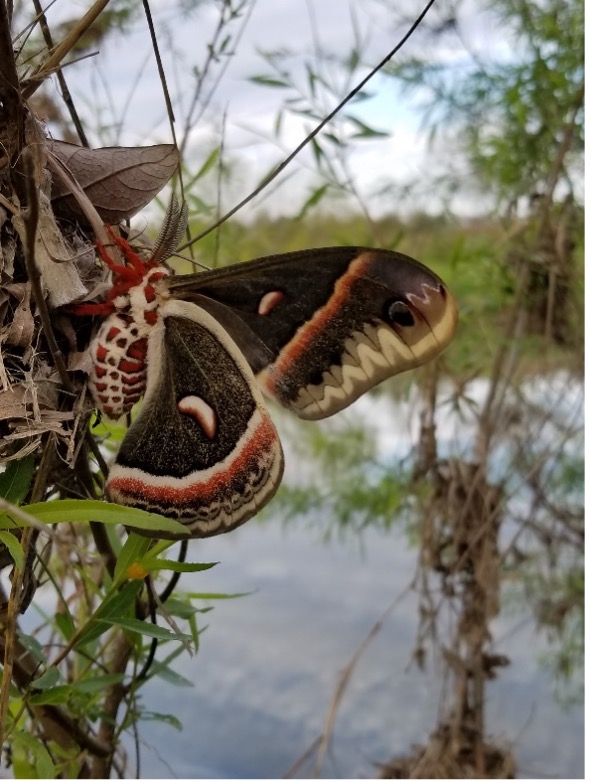
La polilla Cecropia (Hyalophora cecropia), la polilla nativa más grande de América del Norte, entra en diapausa como pupa para sobrevivir el invierno.
¿Sabías que las hojas y los recortes de césped del trabajo del jardín también pueden dañar la salud de los cursos de agua locales?
Los restos de césped que el viento arrastra o rastrilla hasta la calle están llenos de nutrientes. Cuando las aguas pluviales los arrastran hasta nuestros cursos de agua locales, los nutrientes de estos restos, así como las sustancias químicas presentes en los fertilizantes y pesticidas, pueden provocar la proliferación de algas y la muerte de peces.
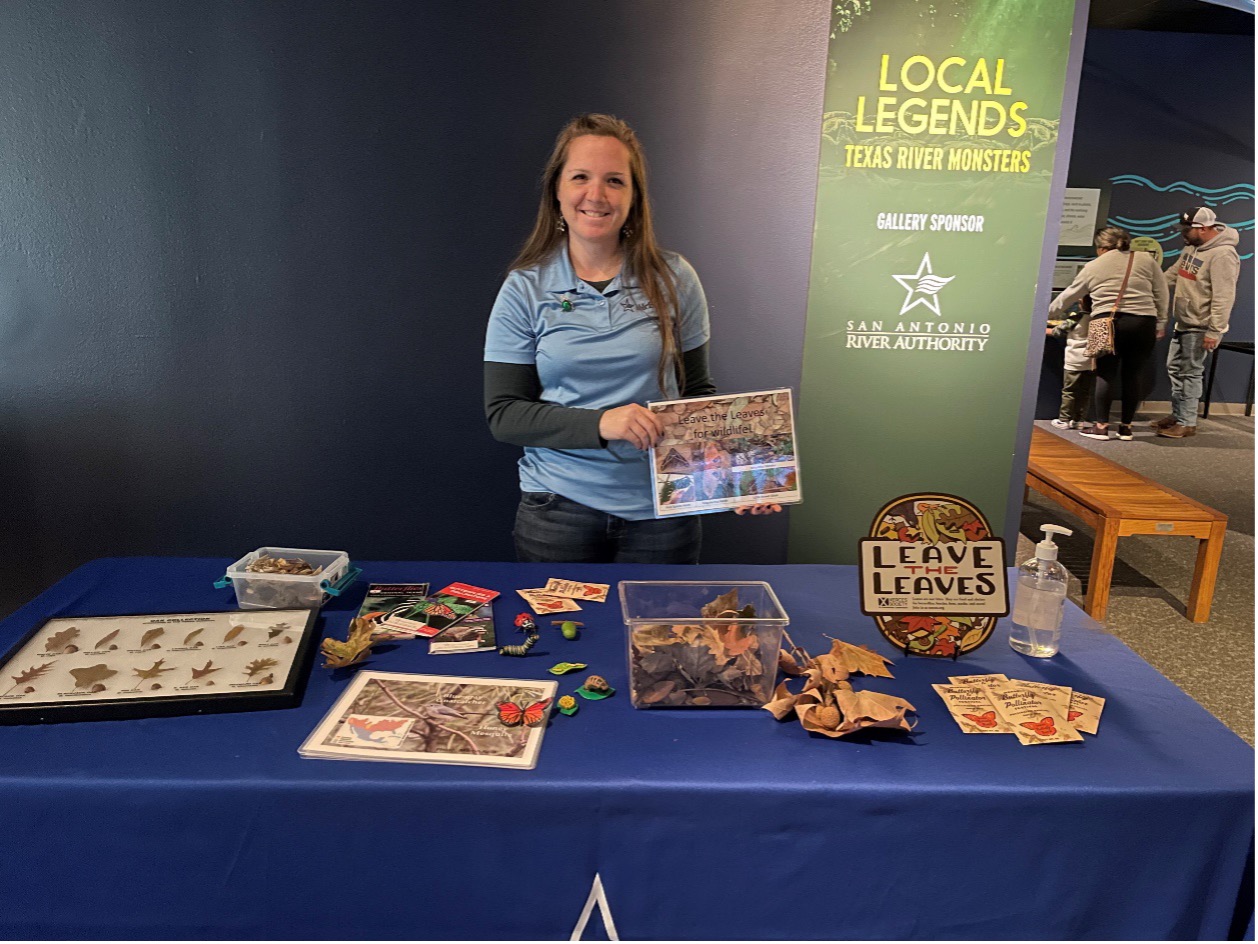
Alicia Ramsey (en la foto de arriba), científica de la Autoridad del Río, habló sobre la protección de los polinizadores el mes pasado en el Museo Witte. Serie Sábado con un científico.
Dígalo con nosotros: ¡LAS HOJAS NO SON BASURA! No solo agregan color y textura a su jardín, sino que también brindan un hábitat para sustentar una variedad de polinizadores para una cuenca hidrográfica más saludable y sostenible. ¡Parece una situación en la que todos ganan, tanto los humanos como los insectos!
PD ¿Quieres difundir la noticia sobre #leavingtheleaves? Echa un vistazo a estos gráficos gratuitos para redes sociales de la Sociedad Xerces para la Conservación de Invertebrados.
Regístrate en River Reach
Alcance del río es un boletín trimestral de 12 páginas diseñado para informar a los electores de la Autoridad del Río San Antonio sobre los numerosos proyectos de la agencia, servir como vehículo de comunicación para la junta directiva y fomentar un sentido de unidad e identidad entre los residentes de Bexar, Wilson. , Karnes y Goliad.
Si desea ser incluido en la lista de correo de Alcance del río, por favor Contáctenos o Complete el formulario.

